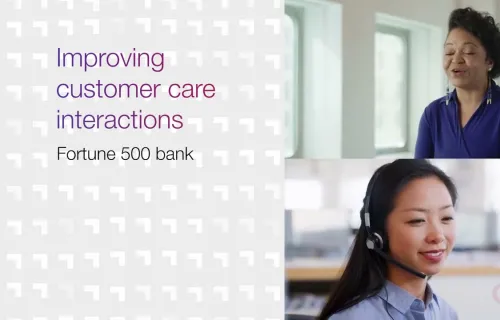As a strategic part of CGI’s global delivery model, our U.S. onshore delivery centers program provides our clients with unique access to talent outside of large metropolitan areas and creates innovation ecosystems, weaving universities and colleges into CGI’s consulting services. Our eight U.S. onshore delivery centers also have a mature community engagement model focusing on issues such as job creation, education, quality of life, and volunteerism in the communities in which each is based.
The U.S. onshore delivery centers have grown into robust multi-purpose extensions of the company’s ethos in local communities, proactively contributing to economic development, encouraging students to pursue Science, Technology, Engineering and Math (STEM) studies and, potentially, career paths. This is all on top of delivering digital transformation capabilities to our clients.
The U.S. onshore delivery centers have created more than 1,700 quality jobs and generated hundreds of millions of dollars in local economic activity. Moreover, through them, we have built strong partnerships with communities, educational institutions and government at all levels.
Creating local employment opportunities
“A lot of what’s defined the U.S. onshore delivery centers is building, finding, and retaining talent in parts of the U.S. that have a high quality of life outside of major cities, they have a lower cost of living, and are great places to raise families and build careers,” said Will LaBar, who oversees the U.S. onshore delivery center network. “Our customers and CGI are looking for creative ways to win the proverbial ‘war for talent’ and the U.S. onshore delivery centers change the game.”
For smaller communities with more technology talent than technology jobs, CGI’s U.S. onshore delivery centers help keep young professionals from leaving town to find work. “In today’s market, access to talent is as important as anything else, if not paramount at this point,” LaBar said. “Partnering with communities of this size helps them mitigate brain drain, making the community more competitive at the same time that it makes CGI more competitive.” These are public-private partnerships at work.
Accelerating STEM
Influencing education in the communities that CGI partners with for its U.S. onshore delivery centers has always been part of the mission. Evident through a program called
STEM@CGI, geared toward engaging students in STEM fields. “Since the inception of STEM@CGI, our goal has been to meet the needs of students underrepresented in STEM education, and to help them prepare for these careers,” wrote Lashonda Dean, administrative coordinator of the STEM@CGI program, in 2020. “Students with disabilities, girls, minorities, and the economically underserved often don’t have equal access to STEM education. It takes intentional solutions to overcome these circumstances.”
The roots of STEM@CGI lie in our core value of Corporate Social Responsibility. Our first U.S. onshore delivery center — founded in 2006 in Lebanon, Va. — was involved with the local school system from the beginning, LaBar said.
“To have the workforce we want, we know we have to inspire students to seek careers in IT,” he said. “We’ve found more ways to engage in school systems, and work to ensure we are reaching students who are part of groups underrepresented in our industry.”
Facilitating career changes
This emphasis is apparent in the new apprenticeship programs that the U.S. onshore delivery centers in Lafayette, Knoxville and Belton have recently launched. CGI runs the Department of Labor-registered apprenticeship program through a partnership with Apprenti, a non-profit organization.
The program is structured to provide equitable access and representation in the fields of technology. CGI teams in Belton and Lafayette have focused on recruiting veterans for the apprenticeships, as well as women and others who are underrepresented in IT careers.
Apprentices work through a boot camp to prepare them with skills needed to succeed in IT before joining CGI. Then they work with CGI teams and mentors for 12 months at one of the U.S. onshore delivery centers. This pilot program included 10 apprentices across two U.S. onshore delivery centers and is preparing to scale in the next year to include more apprentices and locations.
Three of those apprentices are in Belton, working with two major federal agency clients, according to said Chris Flor, Vice President Consulting Services. Belton, 20 minutes east of Fort Hood, is a town of around 22,000 people, many of them veterans or active duty military. Of the 265 people who work at CGI’s Belton U.S. onshore delivery center, close to 40% have military connections, Flor said.
One of CGI’s key contributions to the local community is working with the Soldier for Life Transition Assistance Program, helping retiring military personnel transition into civilian life, Flor said.
Supporting community spirit
CGI’s Belton U.S. onshore delivery center has had a float in the town’s well-known Independence Day parade for six years, until COVID forced the parade’s cancellation in 2020. “We’re a five-time winner of the award for best float,” Flor said, with some pride. And while some may wonder why a tech company like CGI is building parade floats, it only takes attendance at one of Belton’s Independence Day parades to understand that this is all about pride in the community and what Belton has to offer the world, he added.
None of this springs forth fully formed, however. “We don’t follow the approach ‘build it and they will come,” Flor said. “We started small. We started in an abandoned strip mall with just CGI Federal.” After some early successes and growth, CGI’s Commercial and State & Local Government group also established a presence in Belton. Eventually, the company opened the current location to build on those successes.
Inspiring innovation
The U.S. onshore delivery centers are becoming innovation platforms as well. In Lafayette, for example, CGI developers and students in our STEM programs developed an Internet-of-Things data management solution based network of air quality sensors. In the course of the project, the team developed new intellectual property that might become part of future products for both Federal, commercial, and international clients. In CGI’s newest center in Knoxville, Tenn., CGI leaders from across the U.S. coached startups in the Innov865 event on October 6. Healthcare experts are engaged with the startup accelerator for digital health in Louisiana called Opportunity Health.
LaBar is quick to note though, innovation is not just in technology. It also applies to research and development approaches, recruiting talent, and community engagement.
“When you have smaller communities, they can be more agile around partnerships and innovation,” he said. “For example, in Southwest Virginia and Lafayette, we’ve been experimenting with high school interns and if you extend that to include our community college internships, we potentially have a full spectrum of programs that reach across the educational pipeline.”
CGI's U.S. onshore delivery centers exemplify the power of public-private partnerships, LaBar said. These partnerships position communities to prepare for the workforce and societal needs of the future, LaBar said. “It creates a culture of innovation and empowerment for the company and the community,” he said. “Together with our partners, we are only looking forward.”





